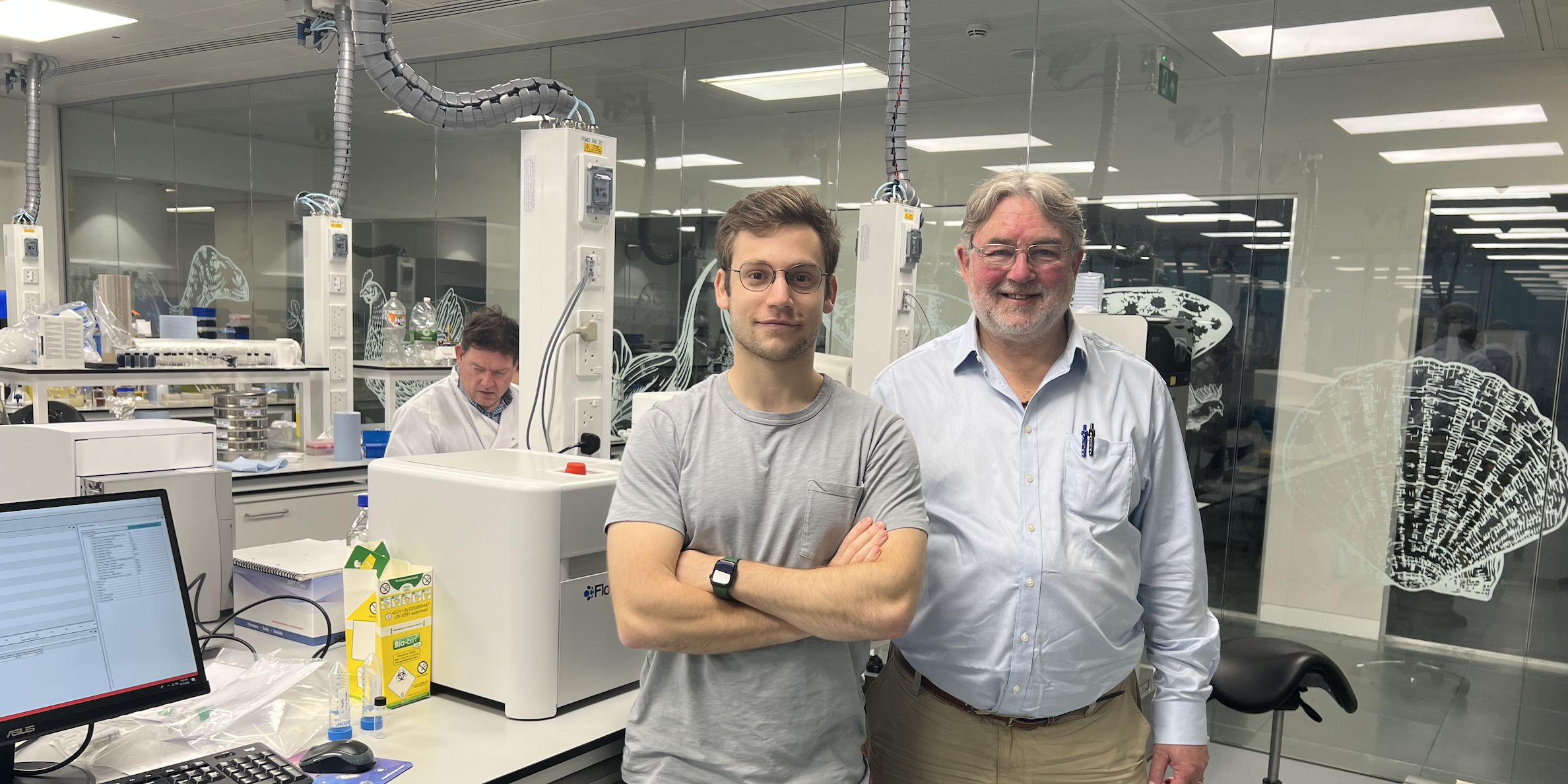While many sectors are facing a slowdown due to changes in the market, research shows that VCs are still betting on biotech and medtech is relatively healthy too. But biotech and medtech startup founders are still faced with a host of challenges — from regulatory barriers to funding to patient data and privacy to a steep talent gap.
Collaboration — between research institutions, large corporations and startups — could be the solution to some of these challenges. We spoke to the experts to find out more.
Data privacy
A challenge working with patient data is that it can bring up individual privacy issues. Nerida Scott, European head of Johnson & Johnson Innovation (JJI), whose goal is to accelerate early-stage healthcare innovation through strategic partnerships, says that large sets of anonymised data can be highly useful when working with patient data and should be the way to go.
Patient data is hugely sensitive information at the individual level and it should always be protected with the utmost rigour and focus
“Patient data is hugely sensitive information at the individual level and it should always be protected with the utmost rigour and focus,” she says. “But having said that, I think we've got some amazing technology platforms, particularly in Europe, where anonymised data is contributing enormously to our understanding of human health and diseases.”
She adds that scientific interest isn't in the individual, rather “it's in how groups or subgroups fit within the whole.
“What we need to be able to do is very quickly be able to look at large datasets, where the individual isn't personally identifiable,” she continues. “To see whether patients with specific profiles are at risk of certain diseases and whether these can be best prevented or treated by a clear set of actions that are determined from the widest, most diverse data set.”
Regulatory hurdles
Regulation is often the biggest hurdle in medtech, according to Tatum Getty, a medtech investor and founding partner at VC Thena Capital.
“The most significant change recently has been the transition of the Medical Device Regulation process (MDR) to the Medical Device Directive (MDD), which is the regulatory process to achieve CE Mark in Europe,” she says. CE marking affirms a company’s conformity with the European standards of health and safety.
Getty says this transition, along with other changes, has resulted in a more complex regulatory environment in Europe. “Another requirement is the UKCA mark, which is an additional regulatory requirement for companies that wish to market products in the UK since Brexit,” she says.
To tackle this, Getty says startups must “invest time thinking regulation through early in your journey as it is a time-consuming process”.
This can be achieved, in part, by having more institutional and sector conferences and events with low-cost entry for medtech, healthtech and biotech companies. Another option is getting engaged with syndicates that include corporate investors — or incubators and collaborators that have expertise in getting innovation through regulatory and commercial hurdles.
University spinouts and startups
Finding the right talent with a combination of scientific, technical and business skills can be a huge challenge for medtech and biotech startups. According to a 2021 report, there are 33k medtech companies in Europe, of which 95% are SMEs that employ fewer than 50 people.
“Talent is a big hurdle that we can partner across the ecosystem to solve,” says Scott, adding that bridging the gap between academia and entrepreneurship is vital for the growth of medtech and biotech — and that universities should encourage more entrepreneurial initiatives and build programmes that combine technology and biology.
However, there has been improvement in the sector over time. Scott points out that increasing numbers of graduates are now considering entrepreneurship as a career option.
To get a product to the market, you need a whole host of different skill sets, knowledge and connections
“To get a product to the market, you need a whole host of different skill sets, knowledge and connections,” says Scott, pointing out that JJI seeks to bring innovation and life science business skills together through Johnson & Johnson Innovation – JLABS (JLABS) — a global life science network providing startups with access to lab space, expertise, community, industry connections and entrepreneurial programmes.
“Scientists are thinking about how they can take innovation from the lab to a patient and industrialise what they do, and that’s fantastic,” she says.
Getty agrees, adding that there’s often a disconnect in the incentives between academia and research to those of a typical entrepreneur wanting to get their product to market.
“Universities, especially in the UK in comparison to US universities, are notorious for keeping hold of the IP and having a disproportionately high percentage of ownership of the company,” she says. “Great ideas get aborted because the incentives are misaligned.”
Funding
Fundraising is another area that needs attention in European biotech and medtech. Early-stage funding for European biotechs has grown by 13% since 2010, but that's below the US, at 17%, and China, at 18%.
“If you start with a bigger pot of money, potentially you can test in parallel and in more areas and it might not be the one that you thought initially that turns out to be the most transformational,” says Scott. “That's where you see this sort of drip feeding of money in Europe can potentially increase the risk of failure, whereas in the US, you might have had more shots as there are more funds.”
She adds that funding models need to understand the nature of medtech and biotech — and be patient for slower returns on investments.
In healthtech, across Europe, there are a handful of early-stage funds laying the foundation of necessary support
“Specialised funding is the name of the game, across sectors, with the expertise and power to unlock current blockages,” says Getty. “In healthtech, across Europe, there are a handful of early-stage funds laying the foundation of necessary support. In the UK, however, we have a significant early-stage skills gap across the investor community, and as a result innovations struggle to reach their potential.”
Both Getty and Scott emphasise the importance of collaboration to address this gap in funding. With over 60 companies in its active investment portfolio in EMEA, Johnson & Johnson Innovation — JJDC, Inc. (JJDC), the strategic venture capital arm of the company, has invested more than $650m in the region between 2013 and 2021.
Getty adds that if more sector specific consultants, operators and medical business experts were recruited to become venture partners, advisors and investors, “it would drive ‘smarter funding’ to get more of these companies to Series B+ stage.
The year ahead
The pandemic accelerated the growth and investment in medtech and biotech and though growth has since slowed, there are still opportunities. The medtech sector in Europe is estimated to make up 27.3% of the world market and has been growing on average by 4.8% per year over the past 10 years.
The biotech sector has also been booming with a consistent 8.2% yearly growth in investigational new drug submissions globally since 2014 and European healthcare-focused VC funds growing at an annualised rate of 24% since 2012.
“My partners and I have been in the medtech sector for the past two decades — and with every downturn, we have seen renewed investment in health,” says Getty. “Interest today in the health market is two-fold — the longstanding resiliency of this space coupled with increased focus on impact, people and planet as part of committed ESG initiatives.”
Scott points out that the pandemic showcased what collaboration could achieve in the medtech and biotech industries.
“It was really hopeful, because you saw all segments of the ecosystem come together,” she says. “You saw governments come together with industry, you saw regulatory agencies that were working in genuine partnership looking for innovation that would help save lives.”
Interest today in the health market is two-fold — the longstanding resiliency of this space coupled with increased focus on impact, people and planet as part of committed ESG initiatives
Getty and Scott both expect to see continued growth and investment in biotech and medtech in 2023, especially given the resilient nature of the sectors.
“When you look at what comes next, and you look at the pressures that governments or other payers face in terms of funding healthcare, they're looking for things that are going to significantly change the landscape — they're looking for impact,” says Scott. “We are excited to identify entrepreneurs and innovators who have that potential.”



